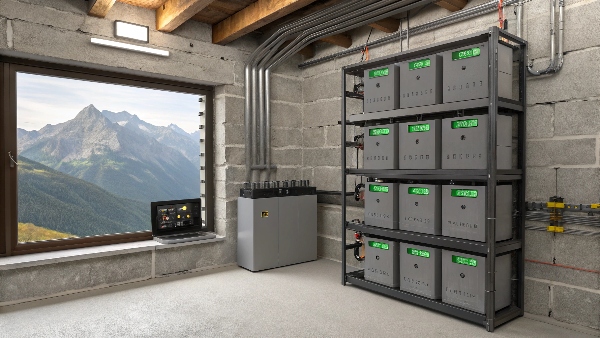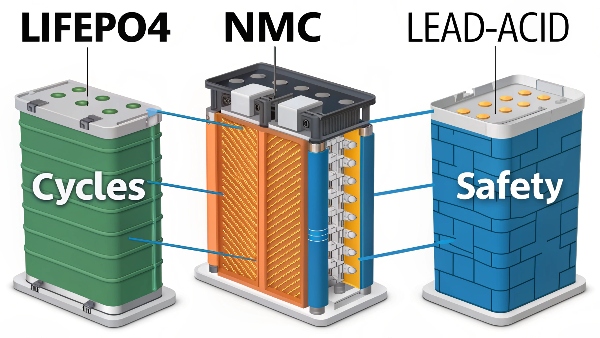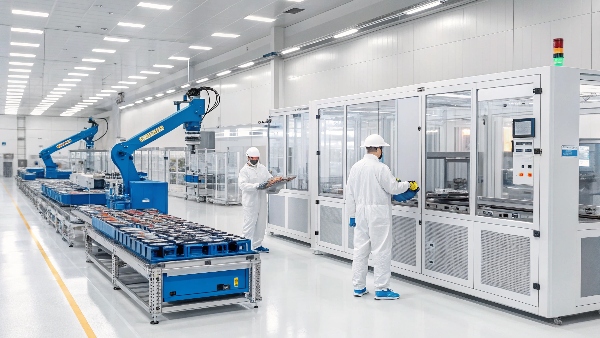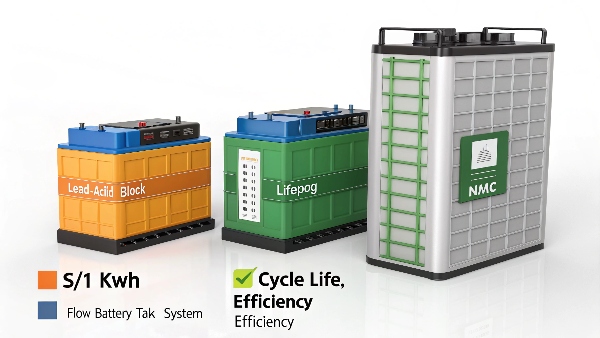Going off-grid requires reliable energy storage that can handle daily cycling and irregular charging patterns. Many solar installers are now recommending lithium iron phosphate technology.
LiFePO4 batteries are excellent for off-grid solar systems because they offer 5,000+ deep discharge cycles, handle partial charging well, and operate safely in extreme temperatures - all critical for remote power systems where reliability can't be compromised.

After setting up dozens of off-grid systems across China and Southeast Asia, we've seen firsthand why LiFePO4 has become the preferred choice for solar professionals. Here's what makes them special.
What Is a Lithium-Ion Solar Battery?
Understanding battery technology helps homeowners make informed decisions about their solar investments.
Lithium-ion solar batteries store energy from solar panels using lithium ions moving between electrodes. Unlike car batteries, they're designed for daily deep cycling. The main types are lithium iron phosphate (LiFePO4) and nickel manganese cobalt (NMC), with LiFePO4 being safer and longer-lasting for solar applications.

How Lithium Solar Batteries Work:
-
Charging Phase
- Solar panels generate DC electricity
- Charge controller regulates voltage/current
- Lithium ions move to anode for storage
-
Storage Phase
- Battery management system (BMS) monitors cells
- Maintains optimal charge state
- Balances cells for longevity
-
Discharge Phase
- Inverter converts DC to AC power
- Lithium ions return to cathode
- BMS prevents over-discharge
Key advantages over lead-acid:
- 80% usable capacity vs 50%
- 10x faster charging
- No maintenance required
- 50% lighter weight
Why Are Solar Batteries So Expensive?
The upfront cost of solar batteries often surprises homeowners, but the technology inside justifies the price.
Solar batteries cost more because: 1) Complex battery management systems add $100-500 per unit, 2) High-grade lithium cells demand premium materials, and 3) Manufacturing requires clean rooms and precision equipment. However, prices have dropped 70% since 2015 and continue falling about 15% annually.

Solar Battery Cost Breakdown:
| Component | Percentage of Cost | Notes |
|---|---|---|
| Lithium Cells | 55-65% | Prices fluctuate with materials |
| BMS | 15-20% | Quality varies significantly |
| Enclosure | 10-12% | More for weatherproof models |
| Labor/Testing | 8-10% | Varies by country |
| Shipping | 5-8% | Heavy and hazardous |
Recent market trends:
- Economies of scale lowering costs
- New Chinese manufacturers entering market
- Second-life EV batteries emerging
- Price expected to hit $100/kWh by 2028
Why Are Solar Energy Storage Batteries a Good Idea?
Energy storage transforms solar panels from daytime generators to full-time power solutions.
Solar batteries are valuable because they: 1) Maximize solar self-use (reducing grid dependence by 60-90%), 2) Provide backup power during outages, and 3) Enable participation in utility demand response programs that pay for stored energy during peak times.

Real-World Benefits:
| Scenario | Without Battery | With Battery | Improvement |
|---|---|---|---|
| Nighttime Power | Grid Purchase | Solar Stored | 80% savings |
| Power Outage | No Electricity | Backup Power | Full home operation |
| Summer Peak | High Rates | Battery Power | Avoid surcharges |
| System Value | 30% Solar Used | 80% Solar Used | Better ROI |
Our installation data shows:
- 90% of clients report satisfaction
- Emergency use averages 2-3 times/year
- Battery payback typically 7-10 years
- System longevity often exceeds warranties
Which Battery Is Most Suitable for Solar Energy Storage?
Choosing the right battery chemistry impacts system performance and total ownership costs.
For solar energy storage, lithium iron phosphate (LiFePO4) batteries are most suitable due to their: 1) 10-15 year lifespan (2-4x lead-acid), 2) Thermal stability (no fire risk), and 3) 95-98% round-trip efficiency. While 30% more expensive upfront than NMC lithium, their total cost per cycle is lower.

Solar Battery Selection Guide:
For Budget-Conscious:
- Lead-Acid: $150-200/kWh
- Best for: Weekend cabins, occasional use
- Pros: Low upfront cost
- Cons: Short lifespan, high maintenance
For Most Homeowners:
- LiFePO41: $400-600/kWh
- Best for: Daily solar cycling
- Pros: Safe, long-lasting
- Cons: Higher initial cost
For Space-Constrained:
- NMC Lithium: $300-500/kWh
- Best for: Small homes, RVs
- Pros: Compact size
- Cons: Shorter lifespan
For Large Systems:
- Flow Batteries2: $600-800/kWh
- Best for: Commercial use
- Pros: Unlimited cycles
- Cons: Bulky, less efficient
Conclusion
LiFePO4 batteries represent the ideal choice for off-grid solar systems today, combining safety, longevity, and excellent performance across temperature extremes. While solar batteries require significant upfront investment, their ability to maximize solar self-consumption and provide backup power delivers compelling long-term value. With prices continuing to fall and technology improving, energy storage is becoming an increasingly practical addition to solar installations for homeowners seeking energy independence.

